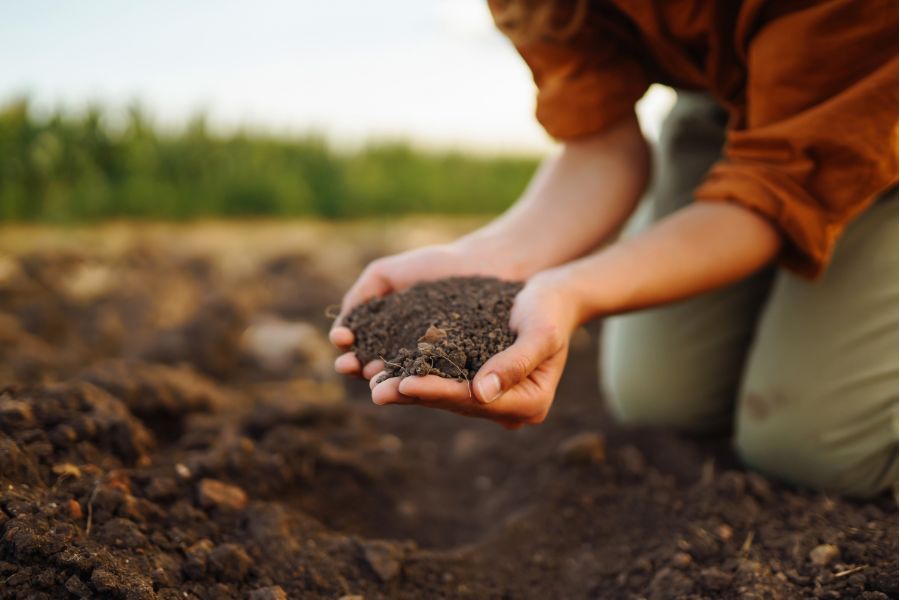The foundation of every thriving plant isn’t just sunlight and water – it’s the very ground they stand on. Soil, often overlooked, plays a crucial role in plant health and growth. It provides physical support, anchors roots, stores water and nutrients, and even harbors beneficial microbes that aid in nutrient uptake and disease resistance. Choosing the right soil for your plants, therefore, is the starting point for a flourishing garden.
Unveiling the Secrets of Soil Types:
Soil comes in a variety of textures and compositions, each with unique properties:
- Sandy soil – Drains well but holds little water and nutrients. Ideal for cacti and succulents.
- Clay soil – Retains water well but can be dense and restrict air circulation. Can be improved with organic matter for better drainage.
- Loamy soil – The golden standard! A balanced mix of sand, silt, and clay, offering good drainage, water retention, and nutrient availability. Perfect for most vegetables, flowers, and trees.
- Peat moss – Lightweight and moisture-retentive, but lacks nutrients. Often used in potting mixes.
Remember, these are just the basic types, and variations exist within each category. Knowing your soil’s composition is crucial for making informed choices.
Matching Soil to Plant Personalities
Just like people, plants have preferences! Some, like tomatoes and peppers, thrive in rich, loamy soil, while blueberries prefer acidic and well-draining soil mixes. Research the specific needs of your plants to ensure you provide the optimal soil environment.
For vegetables: Loamy soil amended with compost is a great starting point for most veggies. Leafy greens may prefer slightly richer soil, while root vegetables like carrots might do better with sandier mixes for better root development.
For flowers: Again, consider individual preferences. Roses love rich, slightly acidic soil, while marigolds tolerate sandier conditions. Consult plant tags or gardening guides for specific recommendations.
For trees: Native trees are usually well-adapted to your local soil, but newly planted trees might benefit from amended soil mixes to aid establishment.
Tailoring the Mix: Soil Composition
Sometimes, store-bought mixes might not perfectly match your plant’s needs. Don’t worry, you can become a soil alchemist! Here are some tips for adjusting soil composition:
- Improve drainage – For heavy clay soil, add sand, perlite, or vermiculite to increase drainage and aeration.
- Boost moisture retention – Sandy soil tends to dry out quickly. Mix in organic matter like compost or peat moss to improve water-holding capacity.
- Adjust pH – Some plants require specific pH levels. Use sulfur to lower pH (make more acidic) or lime to raise it (make more alkaline). Always test your soil’s pH before making adjustments.
The Magic of Nutrient Absorption
Healthy soil isn’t just about texture and drainage; it’s also about the invisible symphony of nutrients it holds. Organic matter in soil decomposes, releasing essential elements like nitrogen, phosphorus, and potassium that plants readily absorb through their roots. Choosing the right soil mix and maintaining its health ensures your plants have access to the nutrients they need to thrive.
Maintaining Soil Health: A Lifelong Partnership
Soil is a living ecosystem, and just like any ecosystem, it needs care. Here are some tips for ongoing soil maintenance:
- Mulch – Apply a layer of organic mulch around your plants to suppress weeds, retain moisture, and regulate soil temperature.
- Compost – Regularly add compost to your soil to replenish nutrients and improve organic matter content.
- Rotate crops – This helps prevent nutrient depletion and buildup of soil-borne diseases.
- Test your soil – Regularly test your soil’s pH and nutrient levels to identify any deficiencies and adjust accordingly.
Enjoy the Soil Experiment!
Choosing the right soil isn’t a one-time decision. Experiment with different mixes, observe your plants’ responses, and don’t be afraid to adjust. Remember, healthy soil is the foundation for vibrant plant growth, and with a little care and attention, you can unlock the full potential of your garden!
By understanding and nurturing the hidden world beneath your feet, you can cultivate a thriving garden that flourishes for years to come!


Recent Comments